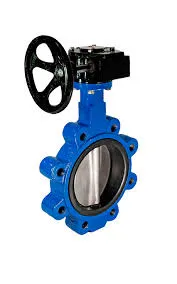Dec . 05, 2024 12:51 Back to list
Three-Way Air Valve for Efficient Fluid Control and Versatile Application Solutions
Understanding the Three-Way Air Valve Functionality and Applications
The three-way air valve is crucial in many pneumatic systems, serving as a central component in controlling the flow of air or gas. Recognized for its versatility and efficiency, it plays a significant role in a variety of industrial, commercial, and residential applications. This article explores the functionality, types, working mechanisms, and applications of the three-way air valve, highlighting its importance in modern pneumatic systems.
What is a Three-Way Air Valve?
A three-way air valve, as the name implies, has three ports one inlet and two outlets, or vice versa, depending on the valve's configuration. The primary function of this valve is to allow or block airflow, thereby directing the air to one of the two outlets while preventing it from escaping out of the other. This capability enables operators to switch the airflow between two different systems or components, effectively controlling pressure, flow direction, and mechanical action within pneumatic circuits.
Types of Three-Way Air Valves
Three-way air valves come in various types, tailored for specific applications. The most common types include
1. Normally Open (NO) In this configuration, the valve is open in its default state, allowing airflow until a control signal is triggered to close it. This type is ideal for applications where continuous airflow is required until a specific action occurs.
2. Normally Closed (NC) This type maintains a closed position by default, blocking the airflow until a control signal opens it. It is often used in safety systems where the flow should only occur under specific conditions.
3. Universal This variant can operate in either mode, switching between normally closed and normally open states based on the system's requirements. This adaptability makes it suitable for complex applications where conditions frequently change.
Working Mechanisms
The operation of a three-way air valve is typically controlled by pneumatic actuators, electric motors, or manual levers. When a control signal is applied, the actuator moves the valve's internal mechanism (usually a spool or a ball), redirecting the airflow based on the specified configuration. The flow direction can be changed rapidly, allowing for efficient switching between processes.
three way air valve

The heart of the valve’s functionality lies in its design. A typical three-way valve consists of a body, a head, seals, and an actuator. The body holds the paths for airflow, while the actuator determines how the valve operates. Material selection for these components is crucial, especially in industrial applications where exposure to various gases and environmental conditions can affect performance and longevity.
Applications of Three-Way Air Valves
The application of three-way air valves spans numerous industries and scenarios
1. Manufacturing and Automation In automated systems, three-way air valves control the actuation of pneumatic cylinders, moving tools or products through various stages of production.
2. HVAC Systems These valves help manage airflow within heating, ventilation, and air conditioning systems, ensuring optimal climate control in commercial and residential buildings.
3. Robotics In robotic systems, three-way valves are used to control the movement of limbs or components, allowing for flexibility and precision in operations.
4. Wastewater Treatment In environmental systems, they regulate the flow of air through treatment processes, enhancing the efficiency of aeration systems.
5. Medical Devices In medical equipment, three-way valves facilitate the control of gases and fluids, ensuring safe and effective patient care.
Conclusion
The three-way air valve is an indispensable component in the engineering of pneumatic systems, offering ingenious solutions for airflow control across diverse applications. Understanding its functionality and operational mechanisms is crucial for leveraging its full potential within various industries. As technology evolves, the design and capabilities of these valves will continue to advance, further cementing their role in enhancing efficiency and performance in pneumatic systems worldwide.
Share
-
Advanced Technology in Wire and Cable FactoryNewsAug.19,2025
-
Applications of Ball Check Valve in Water Treatment PlantsNewsAug.19,2025
-
How Osy Gate Valve Ensures Leak - Tight SealingNewsAug.19,2025
-
Selection Criteria for Wafer Type Butterfly ValveNewsAug.19,2025
-
Threaded Ball Valve Pressure RatingsNewsAug.19,2025
-
Y Strainer PN16 Cost - Effectiveness AnalysisNewsAug.19,2025


